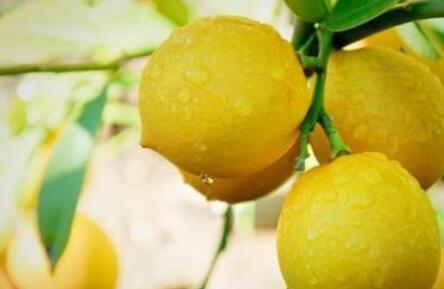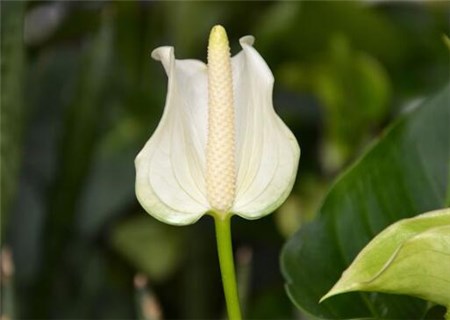How to plant potted lemons? Do you have any points for attention?
Lemon is a small evergreen tree of the genus Citrus of Rutaceae. Leaf blade small, long oval, leaf margin serrulate. Flowers are solitary, blooming all the year round and full of fragrance. Next, let's take a look at how to grow potted lemons.

1. Key points of lemon pot cultivation
1, raising seedlings and pots: large cultivation in the south, suitable for grafting propagation; less cultivation in the north, mainly using cutting methods, can also buy grafted seedlings for cultivation. The root system of lemon has higher requirements for water, nutrients and soil, and the pot soil should be made into water and air permeability, water and fertilizer conservation, and slightly acidic culture soil. The time of putting on the basin and changing the basin is available after autumn and early spring, and can be flexibly controlled according to the local climate.
2. Light and temperature: lemon is a light-loving plant, but if the sun is too strong, it will have poor growth and development. Generally, at noon, the annual average temperature for plant replacement is more than 15 ℃, and the optimum growth temperature is 23 ℃ to 29 ℃. If the plant stops growing at more than 35 ℃, it will be damaged by freezing at-2 ℃. Lemons generally do not need to cool down in summer, enter the room before Frosts Descent and leave the room after Qingming Festival, which can survive the winter safely.
3. Watering and fertilization: lemons need more water in their growth and development, but too much water is not easy to rot their roots. Generally speaking, spring is the time for shoots to spread leaves, pregnant buds to blossom, and appropriate watering. The summer light is strong, the temperature is high, needs more water. However, it should be timely and appropriate, otherwise it will cause fruit drop. Autumn is the period of shoot growth and rapid fruit expansion, so there must be sufficient water. Late autumn and winter are the period of flower bud differentiation, while the basin soil is dry. Lemon prefer fertilizer, in addition to the basin, change the basin to apply sufficient base fertilizer, the growth period should adhere to the principle of thin fertilizer and frequent application. The times and amount of fertilization should be determined according to the growth and phenological period. For example, it is better to apply liquid fertilizer to fully fermented cake fertilizer and water, and the ratio of cake to water is 1VR 200. The soil in the north is slightly alkaline, so ferrous sulfate can be added to the fertilizer solution to form a slightly acidic nutrient solution.
4. Pruning: pruning is generally divided into winter shears and summer shears. Winter shearing should be based on the principle of "cutting density and keeping thinning, getting rid of weak and strong", cutting off withered branches, cutting weak branches and overgrown branches without the effect of initial space. Summer pruning mainly truncates the overlong branches on the fruitless tree, erases the summer shoots on the fruiting tree, and shortens the declining branches in the middle and upper part of the crown. Lemon for promoting flower and protecting fruit is the tree species that blossom and bear fruit in the four seasons, while the potted plants in the north mostly blossom and bear fruit in spring. Therefore, it is necessary to control the water after the autumn shoot stops growing. Wait for both sides of the leaves to begin to roll, and then moderate watering to promote flower bud differentiation. Pay attention to fertilization in the basin and foliar spraying to cultivate robust fruiting mother branches.
5. The main measures to protect fruit: first, to strengthen the supply of fertilizer and water and accumulate nutrients; second, to carry out artificial pollination; third, to thinning flowers and fruits. Lemon fruit is large and needs more nutrients, with a normal leaf-fruit ratio of 30 to 40:1. According to the principle of removing the weak, staying strong and evenly distributed, first remove too many and too dense buds; then remove part of the fruit when the young fruit is 1cm in size; finally, after the physiological fruit drop, the fruit is determined according to the ratio of leaf to fruit. It can also leave a weak branch and a strong branch with only one fruit.
Matters needing attention in planting lemons
1. Fertilizer and water management
After the lemon tree is successfully planted, nitrogen fertilizer should be used as topdressing in the first two years, in order to promote the formation of lemon crown, but there is also an appropriate amount of nitrogen fertilizer control. Because excessive nitrogen fertilizer will cause the excessive growth of lemon trees, can not guarantee nutrition, excess nutrition will lead to early fruit ripening, resulting in the phenomenon of falling flowers and fruits. While using nitrogen fertilizer, we should also pay attention to the application of compound fertilizer such as calcium, magnesium and phosphorus. Organic fertilizer was used as the base fertilizer of lemon tree in autumn to provide sufficient nutrition for the tree and promote flower bud germination and flowering and fruiting. When applying fertilizer, we should pay special attention to the fruit expansion period and shoot stage. Farm manure can be used, but it should be fully mature, and more urea and phosphorus and potassium fertilizer should be applied. And lemon trees are extremely drought-intolerant fruits, so they must be watered and irrigated in time.
2. Ploughing and weeding
Weeding is an essential step in planting lemon trees. Intertillage is to make the soil softer, the roots can be better stretched, and at the same time enhance the permeability of the soil. Weeding is to prevent weeds from robbing young trees of nutrients, water, sunlight and other nutrients. Especially before the advent of the hot and dry season in summer, ploughing and loosening the soil ahead of time before drought makes the soil softer and has a certain effect on reducing water evaporation. Ploughing at least three times a year, at least ten centimeters each time, but be careful not to hurt the roots.
3. Pruning
The growth ability of young lemon trees is very strong, and the flowering rate is also high, and it is easy to grow branches in the places where the branches are bent and on the backbone branches, which affects the shape of the tree. So the pruning of the lemon tree needs to be hoisted with a rope so that the secondary main branch does not bend. Erase the sprouts on the backbone and promote the development of lemon. Lemon is a kind of fruit with exuberant growth, so it should not be overweight when pruning, leave more branches and leaves, and let sunlight through the crown of the tree. Cut off the heart in time to prevent the excessive growth of lemon, burn the diseased branches, dead branches and other waste branches.
4. Protect flowers and fruits
As mentioned earlier, the lemon tree has a very strong growth ability. in order to prevent it from growing and bearing much and low quality, it can be controlled by cutting off roots and controlling water on the fruiting branches. Multiple frustrations can be sprayed about three times in the early stage of growth to inhibit the growth of branches, and spraying before maturity in September can promote the formation of flower buds. If you encounter continuous rainy weather, especially in spring, you should shake the petals properly to make them fall, which can accelerate the turning green of lemons and prevent pests such as leaf roll moths from causing lemon trees to grow and develop normally.
Time: 2019-03-14 Click:
- Prev

How to breed white palm? 6 key points to make it grow better!
White palm also has the title of plain sailing, because it not only has a good name meaning, good appearance, but also has the role of purifying the air, so it is very popular in modern family flower breeding, but many people do not know how to grow white palm better, so how to raise white palm? How to breed white palm
- Next

Explain the planting method of tulips in detail! Six tips to teach you to grow beautiful flowers!
Now more and more people like to plant tulips, do you know how to grow tulips? Next, the editor will introduce the planting methods of tulips for you in detail, and teach you to raise beautiful tulips through these six tips! When is the best time to plant tulips?
Related
- Fuxing push coffee new agricultural production and marketing class: lack of small-scale processing plants
- Jujube rice field leisure farm deep ploughing Yilan for five years to create a space for organic food and play
- Nongyu Farm-A trial of organic papaya for brave women with advanced technology
- Four points for attention in the prevention and control of diseases and insect pests of edible fungi
- How to add nutrient solution to Edible Fungi
- Is there any good way to control edible fungus mites?
- Open Inoculation Technology of Edible Fungi
- Is there any clever way to use fertilizer for edible fungus in winter?
- What agents are used to kill the pathogens of edible fungi in the mushroom shed?
- Rapid drying of Edible Fungi

